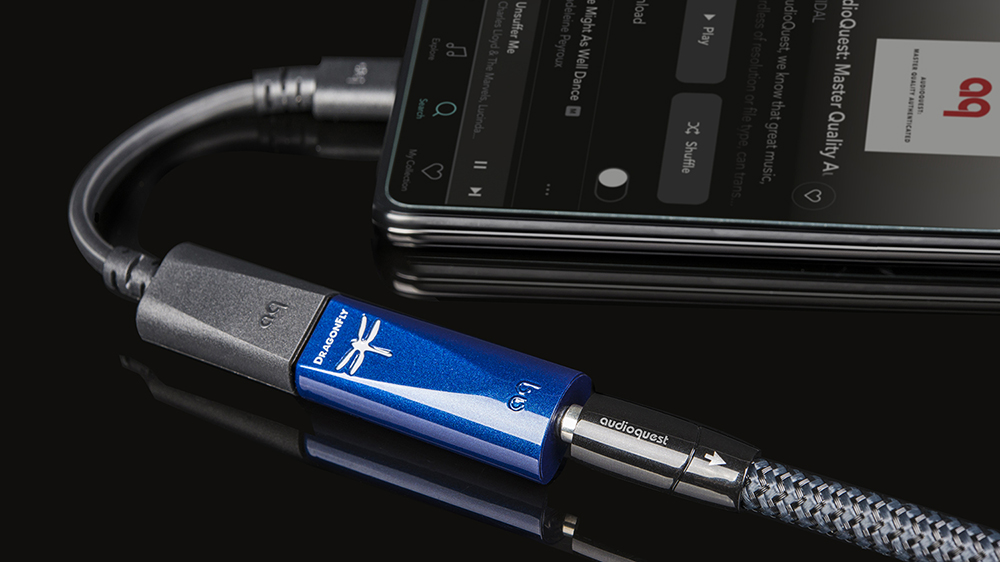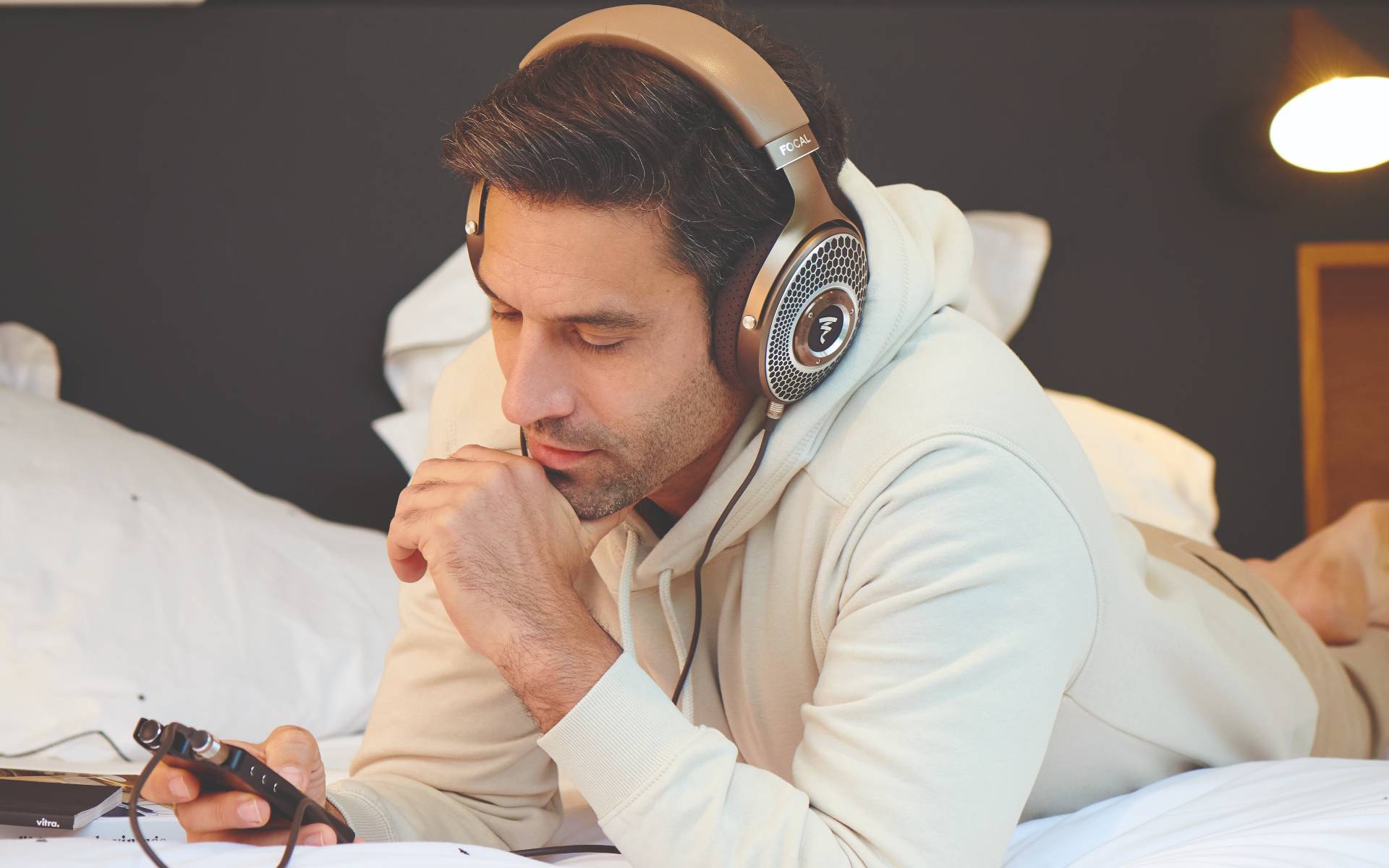Portable hi-fi has progressed so much, I'd choose it over a traditional system
On-the-go listening has reached spectacular sonic heights

There’d be a few standout nominees for ‘Most Improved Player’ in the audio industry over the past decade: wireless headphones, music streamers, and what my personal vote would go to – portable hi-fi electronics.
During the pandemic, a change in living circumstances forced me to box up my hi-fi system (comprised of a CD player, music streamer, turntable, integrated amplifier and standmounters), resign it to a storage container, and turn solely to portable audio to fulfill my sonic appetite. With access to the What Hi-Fi? test rooms also limited due to UK travel and office restrictions, I emotionally prepared myself for months of music malnourishment.
Before you start looking around to see where you put your smallest violin, though, let me tell you that my initial cynicism was very much in vain. Because portable audio can be the crème de la crème of hi-fi. In many ways, it can be seen as the preferred path to sonic reverie.
The rise and rise of portable hi-fi
Portable hi-fi – defined by the likes of battery-powered digital-to-analogue converters, music players and phones, and headphones of course – has, as a collective, sky-rocketed in accessibility, popularity and sound quality over the past decade. Headphones have naturally long been part and parcel of the hi-fi realm, but the portability and compactness of digital electronics to connect them to in an on-the-fly scenario have matured so much that swapping speakers for headphones, or having systems based around each, has never been so attractive.
For that, you can largely thank the breakthrough advancements of DAC designs from (and quite frankly the vision of) Chord Electronics, as well as the sonic competitiveness, practicality and affordability of those by the likes of iFi and AudioQuest, not to mention the presence and innovation of Astell & Kern in particular in the portable music player market.
The fact that, nowadays, we could be on a plane and whip out a Chord Mojo DAC, Chord Poly streamer, pair of headphones, and a phone if we so wished – together, a little physically clunky compared to a straight phone/headphones arrangement but very comfortably within hand baggage allowance and the footprint of a table tray – and be treated to that high quality of sound, on the go and for several hours before something needed charging, is really quite something. Think back a decade or so ago (easy for me, considering *gulp* that wasn’t long before I joined What Hi-Fi?) and, while bijou portable USB DACs such as the AudioQuest DragonFlys were beginning to emerge to improve PC and laptop audio quality (in a 2013-penned review of such a product, we called it “the hi-fi world’s new ‘it’ kit"), it would still be some years before we saw a commitment to that undertaking for phones.

Lower perceived value, higher sonic value
The ratio of perceived value to actual value for a portable system like this may echo that of the width to height of the Empire State Building – the exasperated “that costs two grand?!” (or similar) reaction towards the Chord Hugo DAC hasn’t been a single incident over the years, and understandably perceived value is typically higher in hi-fi systems with kilograms of wood cabinet and aluminum casework behind them. But in terms of sonic value, you can often get a more detailed performance from a headphones-based (desktop or portable) system than you can from a similarly priced speaker system.
The latest hi-fi, home cinema and tech news, reviews, buying advice and deals, direct to your inbox.
Now, an iPhone and pair of AirPods Max is no match for my beloved (incidentally, not far shy of five figures) hi-fi system, but an Apple MacBook Pro, Chord Hugo 2 DAC and Grado Statement Series headphones combination is a truly formidable alternative. It was a nice reminder, in those weeks and months of playing with portable audio much more than I normally would, that even a portable system with a combined asking fee of around a quarter of that (such as an Astell & Kern Kann Alpha player and Austrian Audio Hi-X55 headphones, or a laptop/headphones pairing with an AudioQuest DragonFly Cobalt filling) really does offer a great sonic standard for digital music playback. It's where I'd put my money, were I only allowed one system.
And look how far wireless headphones have come – the AirPods Max, which arguably set the benchmark for its category now, are by no means cheap for Bluetooth headphones, but simply paired with an iPhone over Bluetooth, the playback quality is miles beyond what was possible from such a simple, ultra-portable partnership a few years back.
Goodbye, room troubles
And it isn't just the increase in quality and availability of portable hi-fi; headphone set-ups intrinsically have some advantages. Because what is a traditional hi-fi system constantly battling, no matter its calibre? The very room it sits in. The make-up of a room hugely influences a system’s performance, with its size, the materials of its construction and its furnishings impacting how sound bounces around it and what frequencies are absorbed and reflected. Yes, room correction technology such as that developed by Dirac is being increasingly advanced to help overcome room impressions and make spaces ‘sound’ more neutral, but that – as is typical with DSP – often introduces its own issues, such as impacting the rhythmic integrity of a system’s performance. So take a room out of the equation, as you naturally do with headphones listening, and that problem is no more.
That your headphones are clamped on your head, directing sound straight into your lugholes, means that listening isn’t impacted by seating position, as it is with speaker-fronted systems. You’re always in the ‘sweet spot’ – never off-centre or poorly distanced from the drivers belting out your music.
Speakers, mind you, counter by producing a strong stereo image that headphones by nature do not. You get imaging in headphones of course, as sounds move across the left and right channels (earcups), but you don’t get the broad, just-in-front-of-you spread of sound that speaker soundstages offer – even if switchable cross-feed processing in some DACs tries, with hit-and-miss effect, to simulate a more speaker-like presentation between your ears.
- The best headphones you can buy

Intimate, integrated sound
Perhaps the most obvious attraction of headphone systems: their intimacy. Listen to your favourite vocalists through headphones and there’s a tangibility and shut-up-and-listen directness that just cannot be equaled listening through speakers. When I hear Nina Simone defiantly as anything say, "I put a spell on you because you're mine", or Kate Bush mournfully deliver "If they find me racing white horses, they'll not take me for a buoy", through my Grados, it's like they're singing right into my brain. While I’ve been fortunate enough to on many occasions pick my jaw up off the floor upon leaving demos of high-end hi-fi systems at shows and during What Hi-Fi? testing, one of my most memorable music playback experiences was through (very high-end) open-back headphones. Such was the detail and clarity, it momentarily made me feel physically nauseous (in a good way. I think). For me, headphone listening is truly transportive in a way no other form of playback is.
That’s not because all headphone drivers are more transparent than all speaker drivers, of course; you’re just literally hearing more of the music, as you aren’t losing some of it to the room. And as all headphones, to some extent, physically block external noise, there’s less chance of you being distracted by goings-on around you when wearing them. You get an intensely isolated and intimate experience. Lastly, the fact that headphones typically only have one driver means they don’t have the crossover issues (such as with phase) that are inherent in (multi-driver, multi-way) speakers, either.
So, has portable audio peaked?
People increasingly crave portability, whether for preference or practical reasons, and the hardware market’s there for it, both with established hi-fi brands (Chord, Audiolab, Cyrus, and more) and newer names dedicated solely to portable audio, like Zorloo. Such is the once niche market’s burgeoning attraction, that earlier this year THX launched a portable DAC as its first ever consumer electronics product.
Portable audio is everywhere – in our phones and headphones, in our battery-powered Bluetooth speakers, in our music streaming services – and has been for decades. The Sony Walkman and Bluetooth technology get big shout-outs for that. But portable hi-fi is a more recent, fast-growing phenomenon, and how conveniently it can now deliver such high-quality music experiences has given it a case to, in some instances, be a decent alternative to a traditional hi-fi system. As long as high-quality digital music streaming remains easily available, and especially if Bluetooth quality improves down the line, I think the trajectory of digital portable products' quality and consumer demand will continue upwards for years to come. And I'd be the first to say, long may it do so.
MORE:
16 audio and AV products we want to see in 2022
7 tips to improve your computer sound quality
7 things that make your hi-fi system sound bad (and how to improve them)

Becky is a hi-fi, AV and technology journalist, formerly the Managing Editor at What Hi-Fi? and Editor of Australian Hi-Fi and Audio Esoterica magazines. With over twelve years of journalism experience in the hi-fi industry, she has reviewed all manner of audio gear, from budget amplifiers to high-end speakers, and particularly specialises in headphones and head-fi devices.
In her spare time, Becky can often be found running, watching Liverpool FC and horror movies, and hunting for gluten-free cake.
